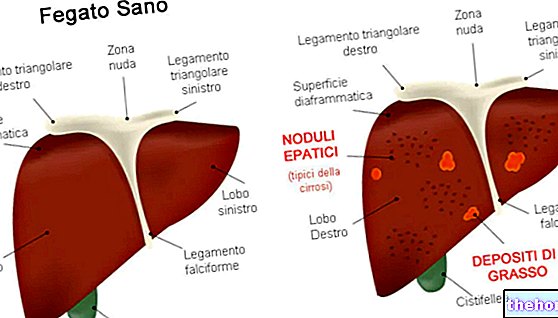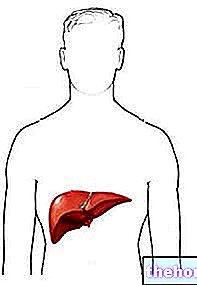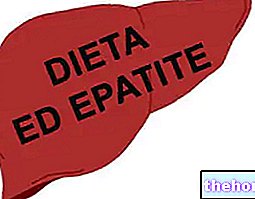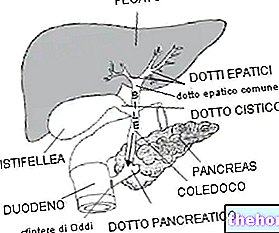Generality
Primary biliary cirrhosis - today more correctly defined as primary biliary cholangitis (CBP) - is a chronic disease on an autoimmune basis, which affects the liver and, more specifically, the bile ducts inside it.
In this particular liver disease, the immune system attacks the cells that make up the bile ducts, causing inflammation, scarring and closure, resulting in the onset of intrahepatic cholestasis.

Therefore, this pathology evolves into cirrhosis only in its most advanced stages.
In some cases, moreover, primary biliary cirrhosis is associated with other types of autoimmune diseases, such as Sjögren's syndrome, rheumatoid arthritis and autoimmune thyroiditis.
Epidemiology
Primary biliary cirrhosis can affect patients of both sexes, including a fairly wide age range. However, it is estimated that more than 90% of cases occur in women between the ages of 35 and 60.
Causes
As mentioned, primary biliary cirrhosis is an autoimmune type disorder. More specifically, T lymphocytes attack the cells of the bile ducts, causing chronic inflammation and consequent scarring.
Unfortunately, the reason why the T lymphocytes perform this attack is still unknown. Some argue that this mechanism can be triggered by infectious agents or toxic agents and that there is also the involvement of a genetic component.
Diagnosis
The diagnosis of primary biliary cirrhosis can be made through the execution of different types of tests, such as:
- Blood tests to determine liver function, in which blood levels of transaminase, gamma glutamyl transferase (or gamma-GT if you prefer) and alkaline phosphatase are assessed;
- Blood tests done to look for specific antibodies, such as anti-mitochondrial antibodies and some anti-nuclear antibodies
- Abdominal ultrasound
- Magnetic resonance;
- CT scan of the abdomen;
- Liver biopsy.
Symptoms and Complications
Primary biliary cirrhosis has no symptoms of any kind during the early stages of development in most patients. Some patients, on the other hand, may experience symptoms, such as:
- Fatigue;
- Dry mouth
- Itching (caused by the deposit of bile salts in the skin);
- Conjunctival dryness.
Later, as the inflammation continues, and therefore as the pathology progresses, the following symptoms may also occur:
- Pain in the right upper abdominal quadrant
- Increase in the volume of the liver;
- Jaundice
- Splenomegaly;
- Impaired absorption of fats (due to low production of bile), resulting in the emission of greasy stools;
- Increase in blood cholesterol levels;
- Deposition of lipids in the skin, resulting from their reduced excretion through the bile;
- Lipid malabsorption and malnutrition;
- Cirrhosis of the liver.
One of the most common complications in women is osteoporosis. In fact, due to cholestasis and liver damage, in the presence of primary biliary cirrhosis there is an altered absorption of exogenous vitamin D and a reduced activation of endogenous vitamin D; both of these factors can favor, in fact, the onset of osteoporosis.
In addition, patients with primary biliary cirrhosis have an increased risk of developing liver tumors.
Therapy
The drug therapy of primary biliary cirrhosis is essentially based on the administration of ursodeoxycholic acid (Deursil®, Ursobil®). This active principle, in fact, is a bile acid able to regulate the absorption of cholesterol, therefore, it is able to carry out those activities that the bile is no longer able to exercise due to the disease.
Ursodeoxycholic acid is administered orally at the usual dose of 300-600 mg of active ingredient per day.
In addition to ursodeoxycholic acid therapy, the doctor may decide to prescribe the administration of vitamin supplements, in particular, based on vitamin D.
Furthermore, if deemed necessary, the doctor may also decide to intervene with a drug therapy aimed at treating the symptoms of primary biliary cirrhosis. For example, the itching caused by the deposition of bile acids in the skin can be treated by administering cholestyramine (Questran®).
Finally, in severe cases, a liver transplant may be required.
Since this is an autoimmune disease, research in the field of primary biliary cirrhosis is moving towards the use of immunosuppressive drugs for its treatment. However, the results obtained so far have not been what was hoped for.
Precautions
Unfortunately, in patients with primary biliary cirrhosis it is almost impossible to fully restore liver function. However, these same patients can take small precautions and make some changes in their lifestyle, in order to preserve, as far as possible, any liver function that the disease has not yet compromised.
In this regard, patients with primary biliary cirrhosis should avoid consuming alcoholic beverages, adopt a low sodium diet and limit, as far as possible, the intake of hepatotoxic drugs.




























